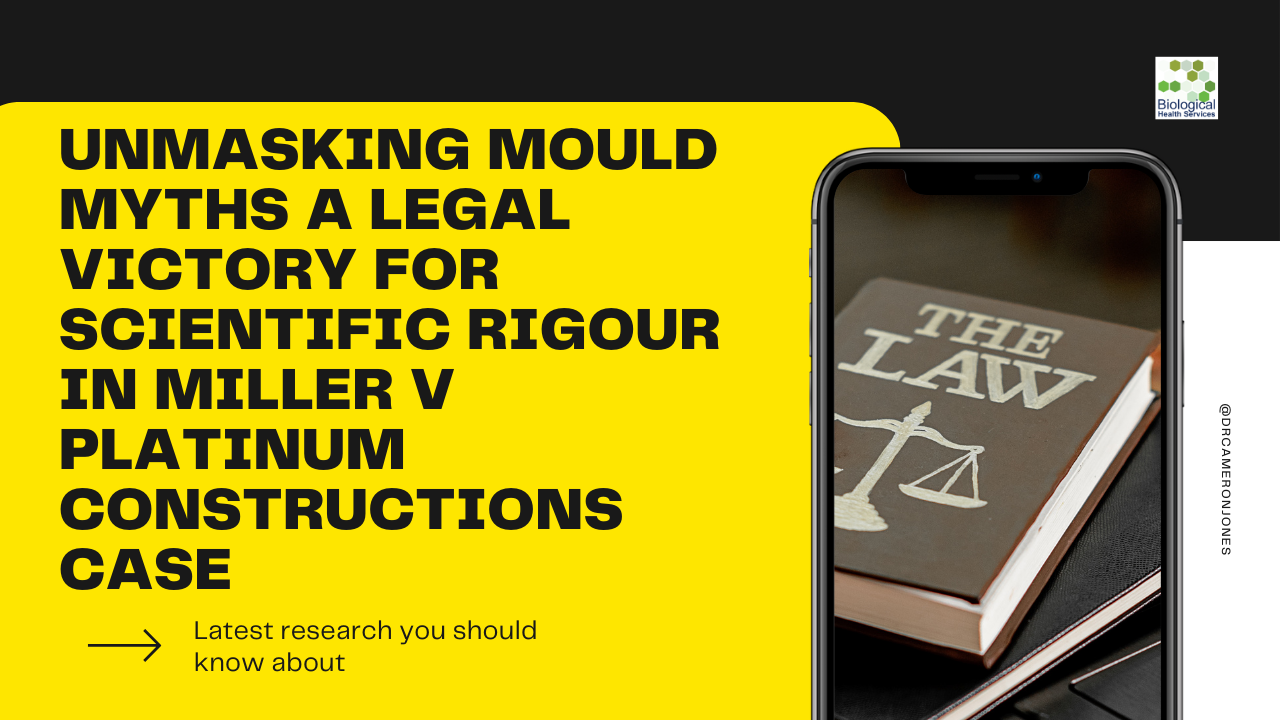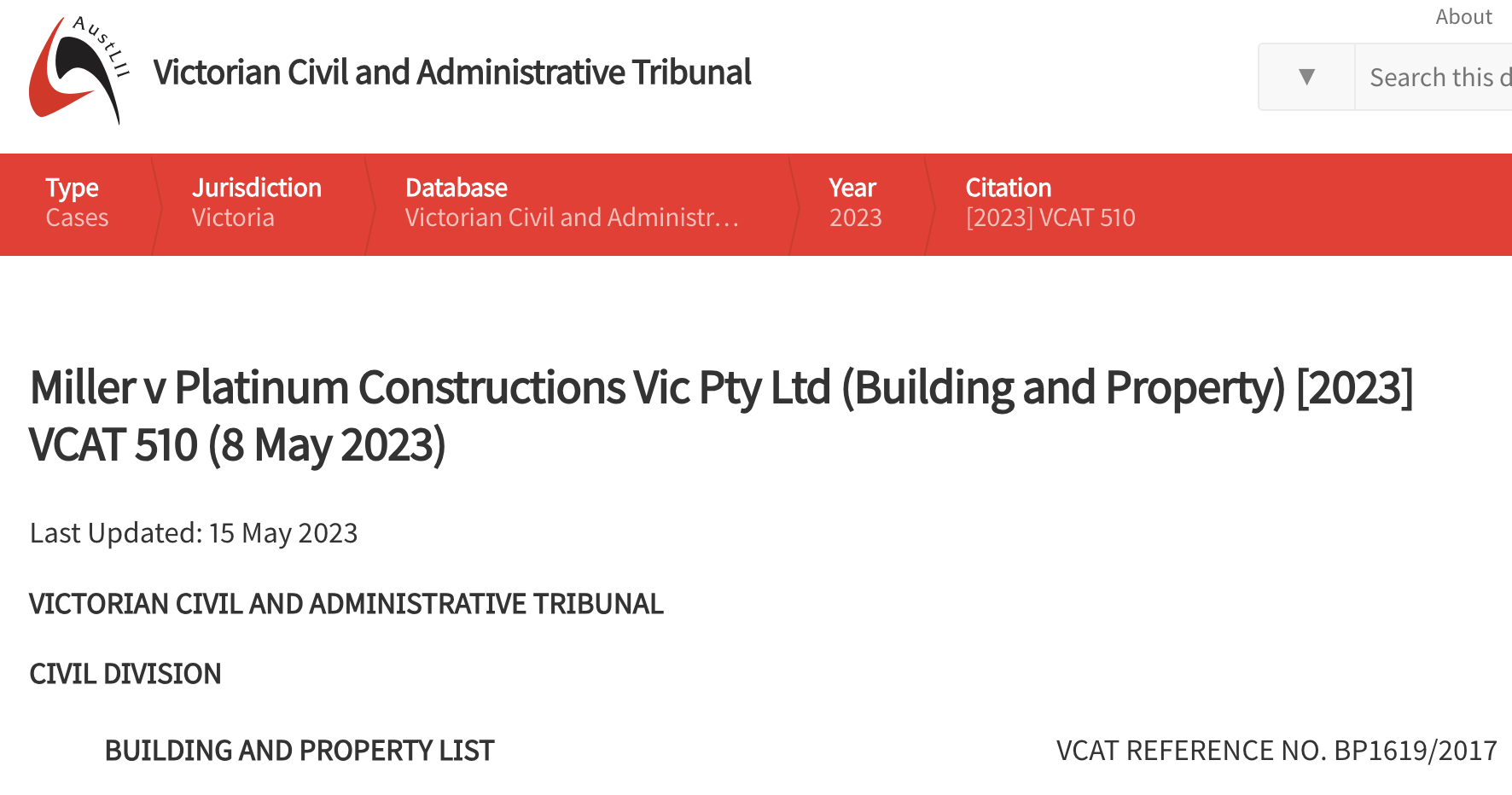Unmasking Mould Myths A Legal Victory For Scientific Rigour In Miller V Platinum Constructions Case

Written by: Adam Jabbar, Advocate High Court | Corporate & Tech Lawyer
Introduction
In the world of civil lawsuits, expert testimonies often serve as the key factor in deciding the outcome of a case. This was the situation in "Miller v Platinum Constructions Vic Pty Ltd (Building and Property) [2023] VCAT 510 (8 May 2023)," a protracted legal dispute involving alleged mould damage to a residence. Dr. Black and Dr. Jones' testimony, two mould specialists, served as the case's main witnesses. However, it was the rigor, precision, and unwavering commitment to industry standards shown by Dr. Jones that eventually led to a favorable ruling. This blog post examines the case's complexity while highlighting the crucial part played by Dr. Jones and his knowledge.
Dr. Jones Role
Dr. Jones was asked to offer his expert testimony for the case as a Ph.D. scientist with experience in mould identification and remediation. Dr. Jone's participation in the proceedings was crucial because of his extensive body of work and reputation for thoroughness and accuracy. His role involved a comprehensive room-by-room inspection of the property, followed by meticulous testing of samples taken from various locations within the house. His findings, which were later praised by the tribunal, were supported by his adherence to industry standards and his wealth of experience in the area. Dr. Jones' testimony highlighted the significance of rigorous methodologies in these disputes in addition to reaffirming the case's scientific integrity.
Methodology
Dr. Jones's approach in this case was characterized by meticulousness and a steadfast commitment to accepted scientific practices. Instead of relying on a single sample, he took room-by-room samples, totaling 14 samples from various locations in the house. This method not only added a layer of depth to the testing but also provided a more comprehensive picture of the mould situation on the property. Dr. Jones also strictly adhered to the guidelines set by the Australian Mould Guideline and the American Hygiene Association, which state that the appropriate volume of air and flow rate is 15 liters of air per minute for 5 minutes.
His procedures involved placing the collection pump at respiratory level, rather than at floor level, as he believed that floor debris could result in incorrect readings if it was sucked into the air sampler. Dr. Jones's approach was defined by these stringent standards and rigorous procedures, which were not only scientifically sound but also in line with the accepted guidelines in the field.
Discrepancies
The case revealed significant discrepancies between the methodologies of Dr. Jones and Dr. Black. Dr. Black's assertion that he had scanned 100% of the slide was a critical point of contention. Dr. Jones highlighted the lack of independent documentary or visual evidence to support this claim. He argued that it was practically impossible in routine microscopy to inspect 100% of the slide. Typically, the percentage of inspections ranged from 12.5% - 30%
Dr. Black's claim of having performed 30 traverses was also questioned. Dr. Jones pointed out that this claim seemed more like reverse engineering an algebra problem, as there was no source data. Furthermore, Dr. Black's reports didn't state that he had counted 100% of the slide, nor did they refer to the number of traverses he performed, or the 490 microns ocular reticle width. This lack of transparency and detail made Dr. Black's evidence less probative than it might have been.
By highlighting these discrepancies, Dr. Jones was able to draw attention to the shortcomings in Dr. Black's methodologies and enhance the credibility of his findings.
Outcome
The court's ruling was a testament to the rigor and reliability of Dr. Jones's methodologies. The judge/Member found the various difficulties with Dr. Black's evidence, specifically relating to how the single control sample of the total airborne fungal counts was taken, meant that the Millers (the plaintiffs) could not demonstrate on the balance of probabilities that the level of fungal structures in their dwelling was at a level at which mould remediation works were required. As a result, the claim, including related claims for consequential costs for accommodation and furniture storage costs, was dismissed.
The judge/Member agreed with Dr. Jones's view that Dr. Black's assertion of having inspected 100% of the slide and the flow rate used by Dr. Black for his air pump did not inspire confidence. The judge was more convinced by the two outside air samples taken by Dr. Jones and his subsequent methods of enumerating them, as they adhered to the STM guidelines. This ruling was extremely favorable towards Dr. Jones, underscoring the importance of his contribution to the case.
Conclusion
The case of Miller v Platinum Constructions sheds light on the importance of meticulous methodology and adherence to established guidelines. The favorable ruling for Dr. Jones does more than just validate his expertise; it speaks volumes about the need for scientific rigor, integrity, and transparency in court proceedings. It's a reminder that the truth is often hidden in the details, and it takes a discerning eye, like that of Dr. Jones, to bring it to light.
Moreover, this case serves as a landmark for all those engaged in the field of environmental science and public health. The court's decision sets a precedent that emphasizes the importance of thoroughness, accuracy, and above all, adherence to scientific best practices. It's a victory not just for Dr. Jones, but for the broader scientific community, reaffirming that when it comes to the pursuit of truth, there's no substitute for rigorous, systematic examination and analysis.
Finally, this case serves as a stark reminder for homeowners, insurance companies, and remediation contractors. Mould infestation is a serious issue that needs to be addressed with scientific rigor. The case of Miller v Platinum Constructions highlights that shortcuts and dubious methodologies will not stand up to scrutiny, especially in a legal setting.
The success of Dr. Jones is a testament to the power of meticulous methodology and the pursuit of truth - a reminder that in the face of science, inaccuracies, and half-truths crumble. It's a case that will continue to resonate in courtrooms and laboratories for years to come.
SOURCE:
Miller v Platinum Constructions Vic Pty Ltd (Building and Property) [2023] VCAT 510 (8 May 2023)


